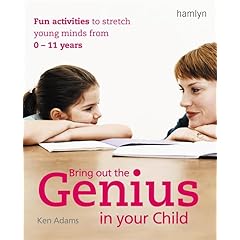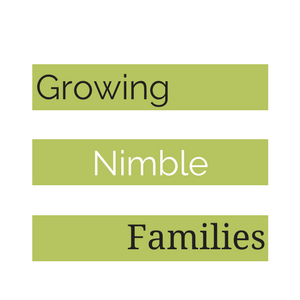Lisa Adams of the Daily Record features a new interesting book that looks a lot of fun. In her article
SIMPLE STEPS ON HOW TO HELP CHILDREN FALL IN LOVE WITH THE IDEA OF LEARNING BEFORE THEY GO TO SCHOOL
She talks to the author about his book.
Bring Out The Genius In Your Child by Ken Adams is packed full of fun activities to help send them to the top of the class.

Here are just some of his tips for helping children on the road to a life-long love of learning.
1 BOOST THEIR CONCENTRATION
Select a quiet area of the house for learning. Television, radio and the noise of other people will only distract them. And stay nearby to encourage them.
When you want them to do something, say their name and make eye contact. This will grab their attention and make them responsive to what you are saying. Make sure any potential distractions such as toys and demanding siblings are out of reach.
2 REPEAT THINGS
When you’ve said something important to your child, ask them to repeat it to reinforce the point. Moving closer to them when you speak is another good idea.
3 MAKE COUNTING FUN
Buttons, coins, fingers, pencils, cakes, matchsticks, spoons, marbles and teddies can all be used with toddlers for counting exercises. Ask your child to count steps on ladders, stairs and pathways.
Sorting and matching games will help their problem-solving skills. Ask your two or three-year-old to sort through a pile of socks and try to match the pairs.
For three and four-year-olds, play a trading game using cut-out circles of paper as money, counting each circle as one unit.
If they want to play with their favourite train, for instance, they have to trade for this by giving you one unit of money.
4 GET CREATIVE
Butterfly pictures provide a link with symmetry in maths. Fold a sheet of paper in half, unfold it and then let your child paint a design on one side.
While the paint is still wet, fold the paper again to create a perfect reflection.
Drawing lines, both straight and wavy, is an essential preparation for handwriting. Thick, chubby crayons are good for producing different colour effects and are easy for your child to hold.
5 BRING OUT THE SCIENTIST IN THEM
Simple investigations based on science and nature will stimulate a child of three or four to think for themselves.
Fill a bowl with water and try various objects to see if they float or sink. Coins, stones, plastic cups and small sticks are all good objects to start with.
Take some ice cubes from the freezer and ask your child to compare water with ice and tell you the differences. You can then leave the ice cubes to melt and time how long this takes.
Try making paper planes out of brightly coloured or patterned paper and watch them fly.
Your child will love this. You can also try flying the planes outside on a windy day.
………..Inspired? Why not try one of these today. Get active with your kids today.











[…] Play-activities first post in January showed you the first part of this series on Simple steps that make kids curious about learning. You can catch up with the first one here. […]